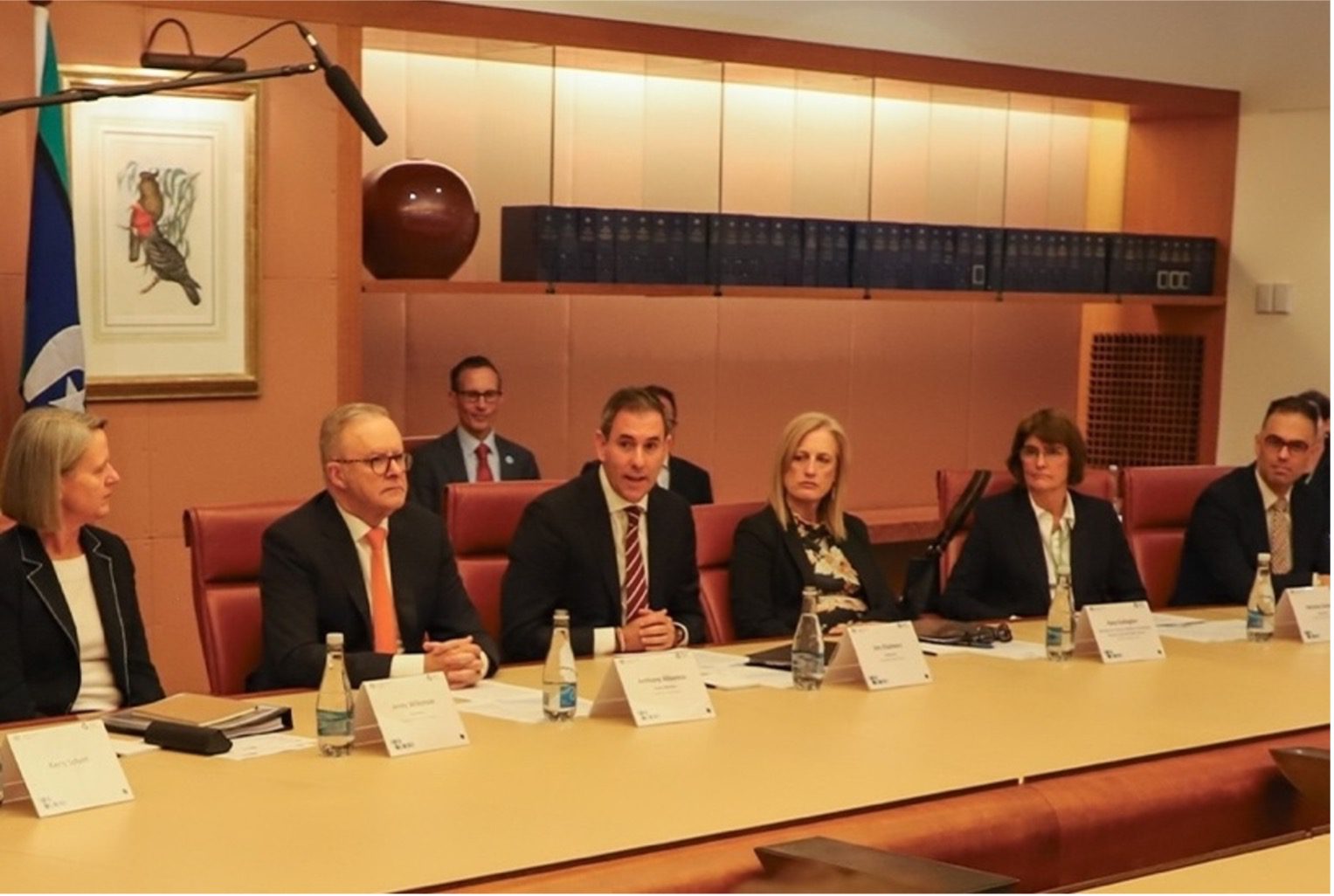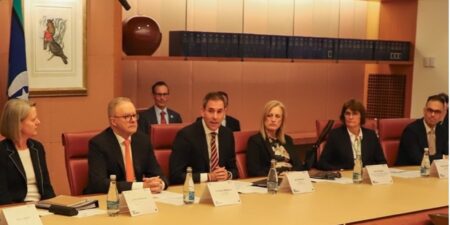The BGA Australia team, led by Managing Director Michael McNeill, wrote an update summarizing key points from Australia’s recent Economic Reform Roundtable.
Australia’s Economic Reform Roundtable has spelled out what will be a cautious approach to lifting the country’s low productivity. Determined to keep his election promises, appease his Labor Party’s union allies and lead a long-term government, Prime Minister Anthony Albanese will likely defer any contentious proposals — such as changing the taxation mix — to the next election.
Critics derided the roundtable as a political stunt designed to neutralize business while keeping controversial issues, such as union-friendly workplace relations laws and the costly net-zero energy transition, off limits. Nevertheless, the government will undertake an assessment that will review tax reform options and move quickly on relatively easily achievable projects in areas such as regulatory duplication and archaic tariffs.
Context
- The roundtable convened government, business and union stakeholders to find consensus on how to address Australia’s low productivity, sluggish economic growth and fiscal challenges. The three main themes were lifting productivity, building economic resilience in the face of global uncertainty and strengthening the budget. The Productivity Commission’s interim “five pillar” reports provided key inputs into discussion: creating a more dynamic and resilient economy, advancing the net-zero energy transformation, harnessing data and digital technology, building a skilled and adaptable workforce and delivering quality care more efficiently.
- Chalmers said the roundtable had agreed on 10 reform directions: progress toward a single national market, simplifying trade and reforming tariffs, issuing better regulations, expediting approvals in national priority areas, building homes more quickly, making artificial intelligence (AI) a national priority, attracting capital and deploying investment, building a skilled and adaptable workforce, creating a better tax system and modernizing government services.
Significance
- The most significant outcome was Chalmers’ confirmation that the government would undertake a tax reform review to guide policy. Attracting business investment and ensuring intergenerational equity will be key principles. The Productivity Commission has recommended initially lowering the company tax rate to 20 percent for companies earning less than AUD 1 billion (US$650 million) in revenue and introducing a net cashflow tax of 5 percent for all companies. Affluent older Australians may face less favorable treatment on superannuation, trusts and capital gains tax.
- The government will immediately focus on the following measures, which were already in motion or previously flagged: removing more “nuisance” tariffs, reducing bureaucratic obstacles related to housing, reforming environmental protection laws and eliminating unnecessary regulations. The government will work with state and territory counterparts to develop a “road user charge” to make up for declining fuel excise revenue due to the increasing popularity of hybrid and electric vehicles.
Implications
- Chalmers said the government would accelerate work on a national AI plan. AI will continue to create tension between the Albanese government and Labor’s union, arts and academia constituencies. The Australian Council of Trade Unions said it had reached a “breakthrough” agreement with the Tech Council of Australia — both were represented at the roundtable — on the issue of paying content creators for data used to train AI. However, the Tech Council said, “what that path looks like has not been determined or agreed.” It has argued that Australia’s copyright laws are “a barrier to many AI companies training or hosting their models in Australia” (see BGA’s August 13 update, “Australian Balances AI Productivity and Oversight”).
- Outside of the roundtable, the government announced it would address the unsustainable growth of the National Disability Insurance Scheme. Health Minister Mark Butler pointed to “dodgy providers ripping off people living with a disability and taxpayers” and the rapid growth of children diagnosed with developmental delay or autism. Almost half of the program’s participants are children under 15. “Tens of thousands of young children with mild to moderate developmental delay or autism are on a scheme set up for permanent disability,” Butler said.
- Business representatives expressed cautious optimism that progress had been made. The Australian Chamber of Commerce and Industry’s Andrew McKellar praised Chalmers for overseeing an “outstanding process.” The Australian Industry Group’s Innes Willox favorably compared it to the 2022 Jobs and Skills Summit, which ended up being viewed by business as political cover for Labor’s pro-union workplace laws.
We will continue to keep you updated on developments in Australia as they occur. If you have any questions or comments, please contact BGA Australia Managing Director Michael “Mick” McNeill at mmcneill@bowergroupasia.com.
Best regards,
BGA Australia Team

Managing Director
Mick is a highly-experienced government relations expert and trusted advisor on consensus building, conflict resolution and legislative developments. He has played an integral role in helping parties achieve desired outcomes in areas of national security, health policy, foreign policy and reputational crisis management, as well as media relations, communications campaigns, immigration and human rights. Mick has two decades’ experience working with government as a media analyst, political adviser and NGO advocacy manager. After a stint serving as an adviser to an Australian senator, Mick took on the role of the locally engaged senior political specialist at the U.S. Embassy in ...
Read More


























